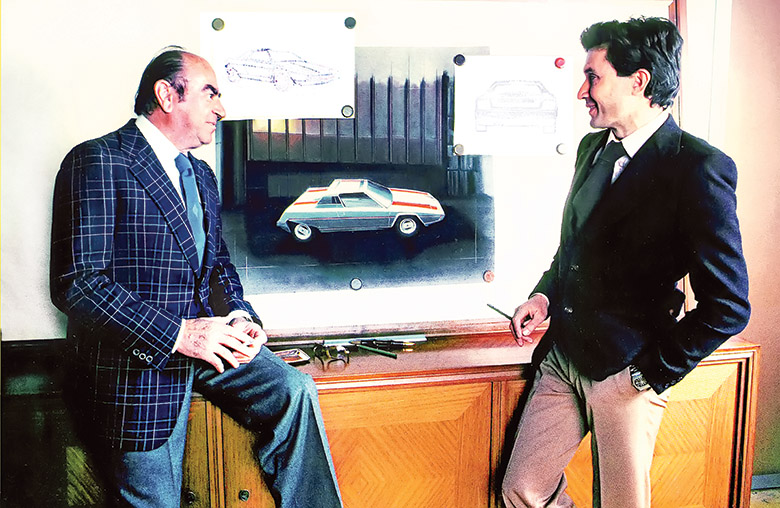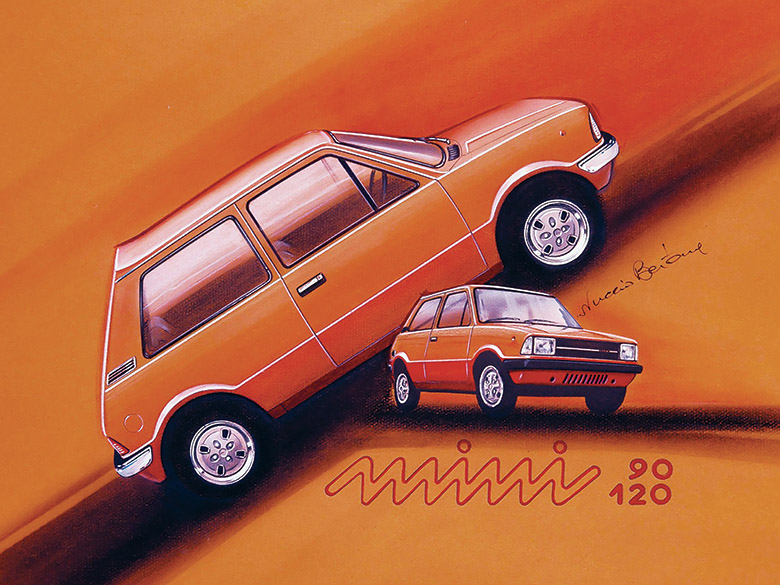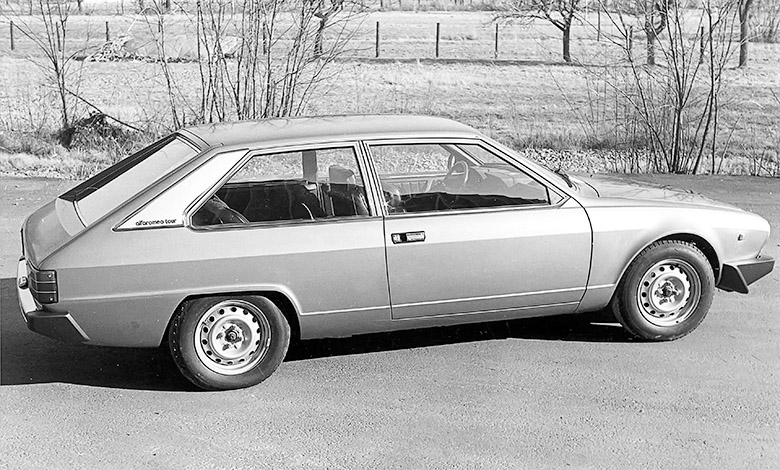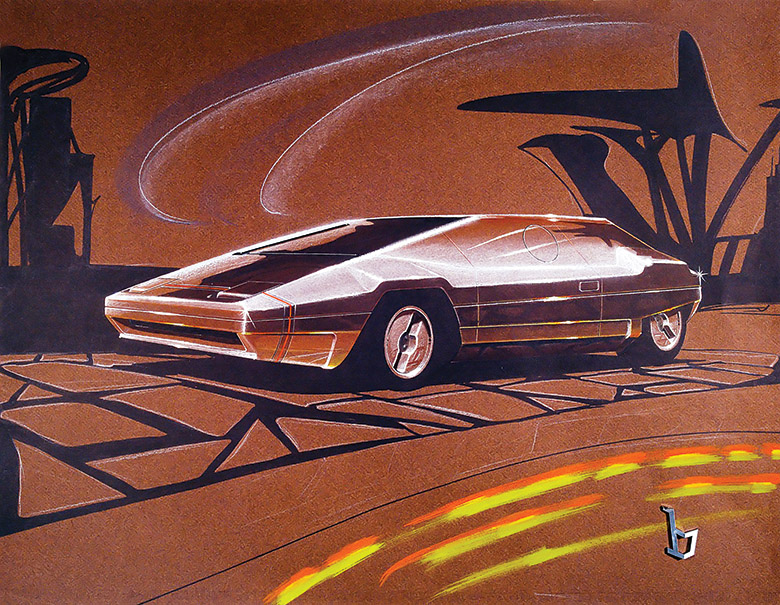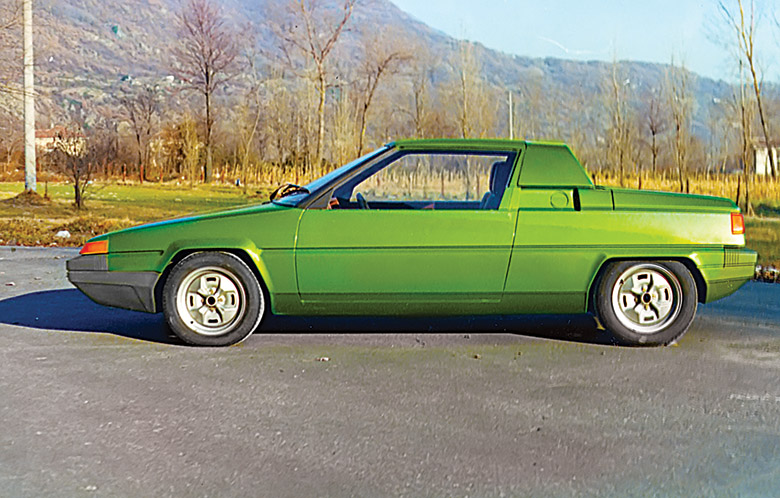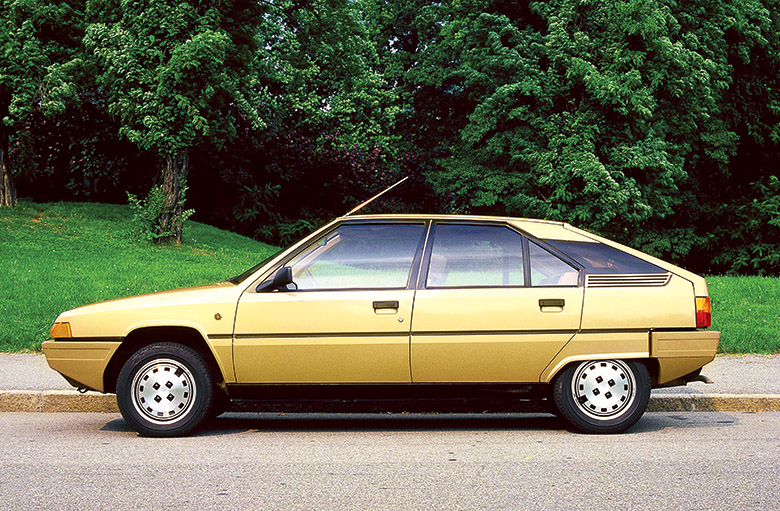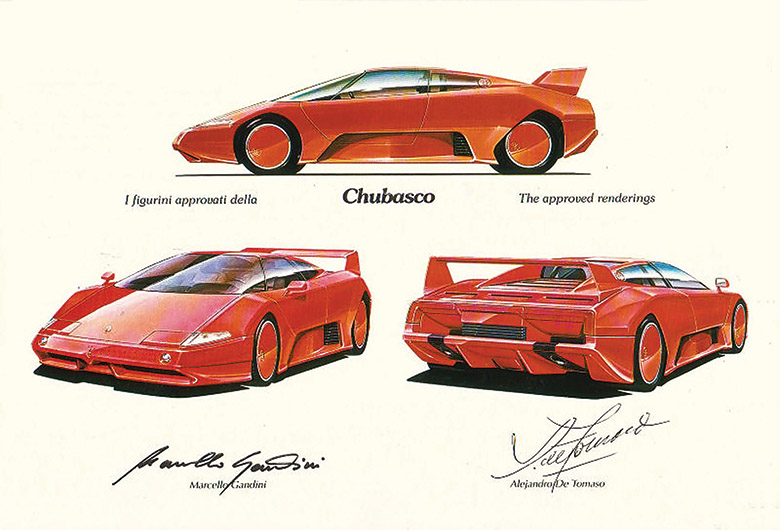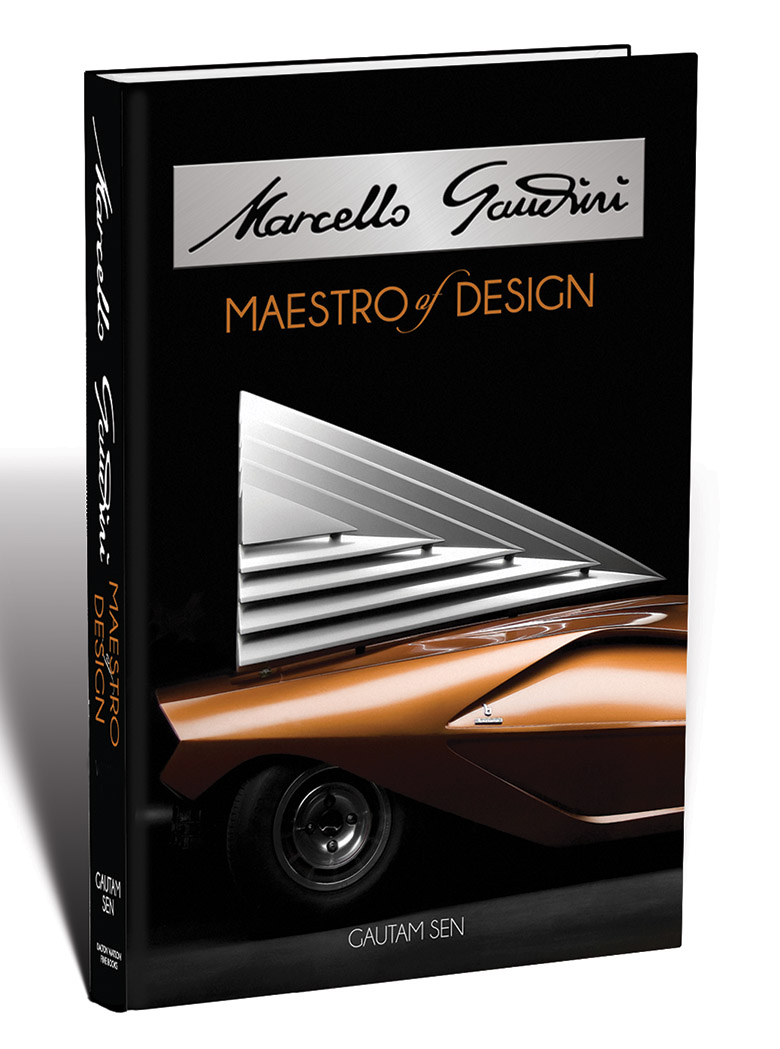
Photo of Stratos by Piotr Degler. Order Here.
By Pete Vack
As we have seen in last week’s review, this set is 800 pages long documenting the cars (and trucks) designed by Marcello Gandini. Volume One left off with the Ferrari 308GT4, one of Bertone’s few flirtations with the Maranello firm. After studying Gandini styles for some 400 pages, one may look at the 308GT4 with new and more appreciative eyes, and according to Sen, the Ferrari “…epitomizes the wedge look of the 70s extremely well.” Volume 2 begins in 1974, just when one might think Gandini’s career at Bertone is reaching its peak. But in fact it had just begun.
Gandini left Bertone on June 30, 1979. Gautam Sen includes 48 designs for Bertone between 1966 and 1974, where Volume One ends in October 1973. Volume Two begins – with no introduction – with the NSU Trapeze, also introduced in October of 1973. Before he left, Gandini would sketch another 28 cars for Bertone, then 30 more as a consultant to Renault and as an independent consultant.
As a consultant to Renault, Gandini did several designs (many were interiors only), but only seven are in the book, and the most significant contribution was the Renault AE Magnum, which forever changed the way Europeans think of 18-wheeler trucks. By 1984 Gandini was again a free agent, with a tremendous reputation and the ability to work from his home north of Turin. Here Gandini’s art would again come into the world of the Supercar, now hypercar, designing once again for Lamborghini the P132, 142, and eventually the Diablo. But it will probably be that Gandini will be mostly remembered for his work at Bertone. Here are a few examples of Bertone/Gandini cars between 1974 and 1979.
Innocenti Mini 90 and 120, October 1974
As with last week, we have chosen a few of the Gandini designs that we think might be of interest to our readers. One such has got to be the Innocenti Mini 90 and 120, which took the concept of the Mini to an entirely new level of sophistication.
Luigi Innocenti had sold his father’s company, which had been making Minis in Italy, to British Leyland in 1972 and CFO Geoffrey Robinson went to Italy to see what could be done with their new purchase. In doing so he discovered the never-launched Innocenti 750 project, and decided it was a great alternative to the Autobianchi A112. Launched in late 1974, the Innocenti Gandini Mini would go through several iterations but would continue to be produced (under DeTomaso) until 1993, a 19-year run.
Lamborghini Bravo, October 1974
We thought that this was the most successful of the designs that were less successful on the Citroën Camargue and the NSU Trapeze, perhaps because it was a concept car only and had fewer restrictions. Or, as Sen points out, the Bravo was really a development of the Countach theme, smaller and tighter. Either way, the Urraco-based Bravo was a two-place V8 and Gandini was left to his imagination; the hood consisted of square vents through which the air entering under the bumper, exited; the rear bonnet vents were for engine cooling as well as acting as a rear ‘window’; the windshield was a three-piece affair and the quarter windows curved to become intake vents. The “dial telephone” wheels famous on Lamborghinis made their first appearance here. Had the times been better, the Bravo could have been a Ferrari 308GT competitor, but Lamborghini was going through another one of its many hard times and the project remained a concept car.
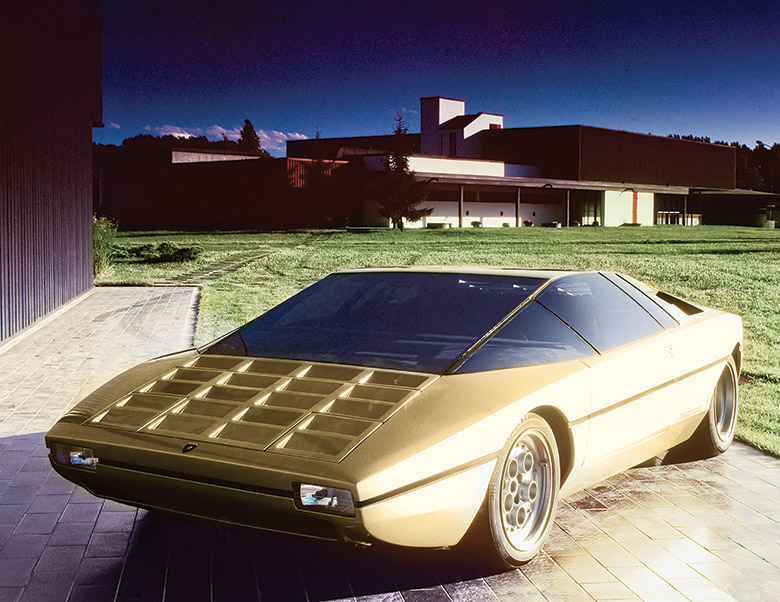
The Bravo was a shortened Urraco and another show stopping concept car. Credit Archivio Stile Bertone
Alfa Romeo Navajo, March 1976
Perhaps the ultimate in the straight-line, folded-paper school as applied to supercars, the T33-based Navajo showed that the angular extreme wedge could be attractive as well as simply striking. Still, the movable airfoil at the rear really extended the mass and it appeared as too much junk in the trunk. But the airfoil had a purpose. “With increasing interest in outer space…and space age war machines, it seemed appropriate to propose a concept that reflected the realms of science fiction and star wars,” said Gandini. And to be sure, the Navajo, despite its name, looked like something out of the George Lucas film Star Wars, but the epic movie was not premiered until a year later. The concept was refined and made more practical with the Ferrari Rainbow, but Bertone knew that Ferrari was stuck on or with Pininfarina’s more conventional, and curvy models.
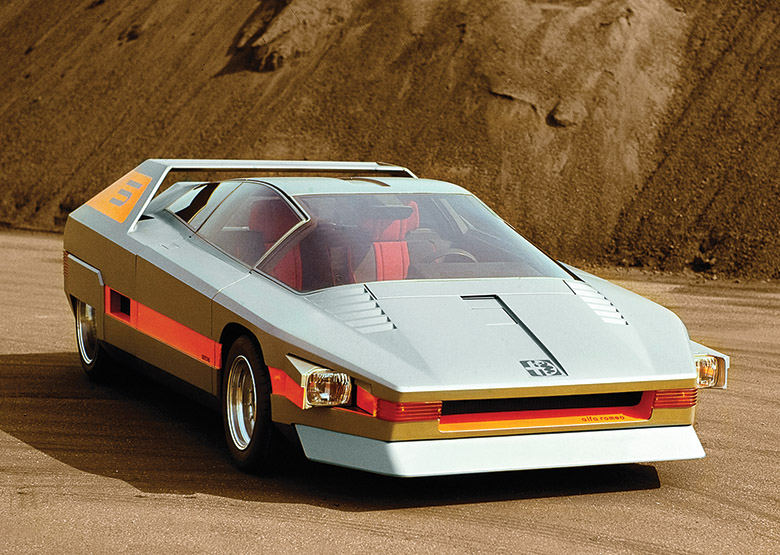
Star Wars car, but the movie was a year away when the Navajo was introduced. Credit Archivio Stile Bertone
Alfa Alfetta Tour, 1976
Another design using the Alfetta as a base, this time coming up with a very smart-looking and well- balanced sport estate wagon, similar to the MGB GT 2+2 Coupe and the later Lancia Beta HPE. The Tour brief is another example of a Gandini Alfa this writer was not aware of, or completely forgotten about. Like the earlier Alfetta- based Project 119 Alfa discussed last week, the company had to decide against producing it.
Lancia Sibilo, 1978
One of the interesting and helpful additions to the layout of the Gandini book is a year guide in the margins of the first page of each new design chapter. It is a timeline that lets us know where we are along the path of Gandini’s career. The Sibilo came along in 1978, well after his significant accomplishments with the Stratos Zero and Rally. In fact the Rally Stratos’s reign had come to an end, and this was Bertone’s chance to come up with something completely new. Following the concept of a mono-volume form, the Sibilo took this to the extreme, using a lengthened Stratos Rally chassis. The glass area was truly blended into the body and the same, copper color that was used on the Stratos Zero. From some angles the car is pleasing, others less so. Reaction was either or, loved or hated. It is now owned by collector Corrado Lopresto.
Fiat X/10, 1979
We include this not because it is nice looking but because it is and we didn’t know it. Somehow this 2+2 version of the X1/9 just doesn’t work, but again, photos can be deceptive. The lengthened wheelbase here was just too much for the car and Fiat did not follow through. But it exists, or existed, and we can thank Gautam Sen for telling us about it.
Citroën BX, 1982
With many of the hallmarks of Gandini’s designs, the Citroën BX was one that really worked both aesthetically and in the marketplace. We have low beltline, large glasshouse, the holy wheels, typical Gandini fender openings, all on a smooth, well-balanced four door sedan. Not easy to do, and in some respects the BX is still controversial. It was one of the last Bertone projects Gandini completed before he left in 1979, and the BX would not be unveiled until 1982. Some 2.3 million BX Citroëns were sold before production stopped in 1996 and was one of the most successful Citroëns ever made. We like it.
The Renault Years: Renault Super 5
Sen notes that Gandini’s departure from Bertone caused ill feelings on the part of Nuccio Bertone, who “…resented it all the way to the grave.” But Renault offered new horizons and probably more money.
The numbers of cars done for Renault were few but the influence was huge, as exemplified by the Super 5. Designed to succeed the tremendously popular Renault 5, the Super did just that while staying faithful to the lines that made the 5 a success. This was not art but industrial design and as Sen writes, “…the Super 5 has been cited time and again as one of his most outstanding designs.” One can see why Renault wanted his services, and why he achieved success at the French firm.
Sen…and no doubt Gandini…devote a massive 18 pages to the Super 5, showing all the iterations and proposals that eventually ended with the definitive Super 5. Introduced in 1984, the Super 5 hand an exceptional ten year run.
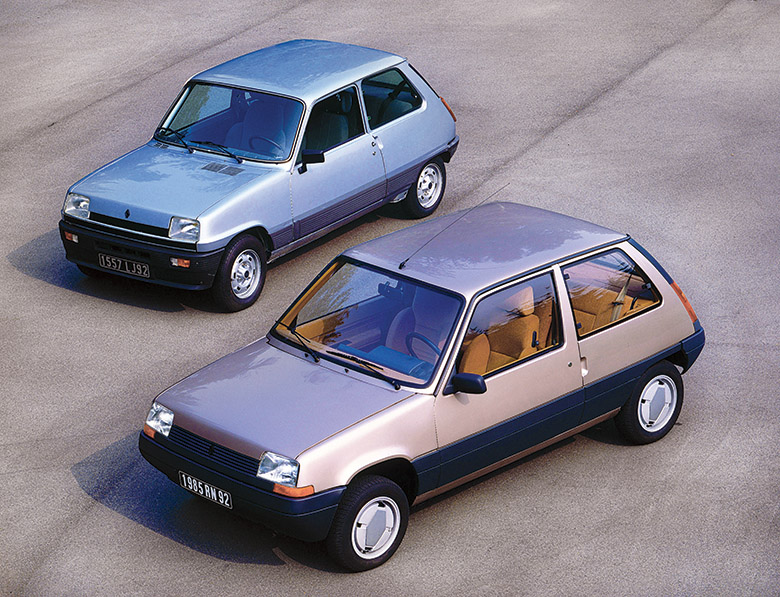
If Gandini was paid a percentage of each Renault 5, he was doing very well indeed. Credit Renault Corporate Communications
A very independent designer
After five years as an exclusive consultant for Renault, in 1984 Gandini decided to be his own boss. Gautam Sen calls the years from 1984 to 2005 “On the Cutting Edge”, and yet we can’t help but feel that after years of fresh, original designs primarily for Bertone, the edge was getting a bit dull. Gandini bought and restored a 17th century villa 20 miles north of Turin, and by 1984 the new house and work area was completed just in time for Gandini to strike out on his own.
For the next twenty years Gandini would create the Maserati Shamal, Chubasco, Ghibli II, Quattroporte IV, Lamborghini P132, P140 P147 and the Diablo. For a reborn Iso Rivolta, the Iso Grifo 90 and 96; for De Tomaso, the Pantera SI, Bigua/Qvale Mustang and a De Tomaso Pantera Concept. The Cizeta V16T and the Stola were advanced supercars that proved that Gandini had not lost his touch, even if the lines were no longer as straight and taut, a return to a more rounded style seemed to be play.
Maserati Chubasco, 1989
Of the Maseratis done under the De Tomaso regime, the Chubasco is a Gandini Maserati that got away and shouldn’t have. Back in his element, also in 1989, Gandini proposed a new supercar for Maserati, using the 3.2 liter V8 upped to 430 hp, attached to a backbone chassis with F1 suspension all around. Onto this, mounted at four points, would be a rakish new body that was a bit of a departure from the flat surfaces of the Countach and Diablo. It was also a ground effect machine, with external intakes and rear diffusers. And it looked great. So great in fact that according to Sen, Fiat thought it was too close to Ferrari territory and pulled the project, even though De Tomaso had already signed off on it. The book provides many color drawings and photos of the full size mockup of this rare Gandini design.
With Marcello Gandini, Maestro of Design, Gautam Sen has achieved what no one else could; after years of visiting with and talking to Gandini, he convinced the family to publish this book. It is a tribute to a remarkable man and designer that absolutely needed to be done. Strongly recommended and there are only 600 regular copies to be sold.
Marcello Gandini, Maestro of Design Volume One by Gautam Sen
ISBN 978-1-85443-279-7 regular, ISBN 978-1-85443-280-3 deluxe
2 Volume set 400 pages in each volume
924 images (449 Volume I and 475 Volume II) – many never seen before!
Over one hundred of Gandini’s designs featured
600 copies of the regular editions, 400 numbered and signed by both Marcello Gandini and Gautam Sen
Published by Dalton Watson, 2016
Our Price: $350.00
Shipping Costs: FREE SHIPPING TO USA AND UK. Shipping to all other countries will be charged one flat rate for first item, additional books in the same order are shipped for no additional s/h charge.
Order Here
